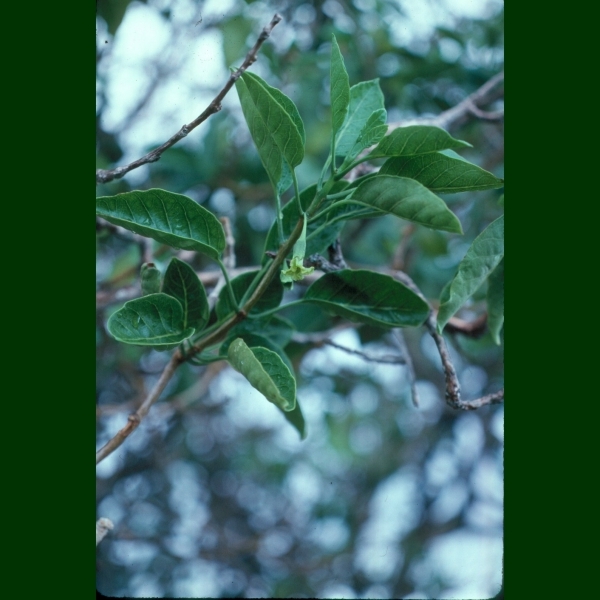 Hawaiian Name(s): ‘aiea, hālena
Hawaiian Name(s): ‘aiea, hālenaScientific Name: Nothocestrum (4 species)
Vernacular Name: none
Family: Solanaceae
Status: endemic
Authority: N. breviflorum A.Gray, N. latifolium A.Gray, N. longifolium A.Gray , N. peltatum Skottsb.
Description: Large shrub/small tree.
Habitat N. breviflorum dry to mesic forest (Hawai‘i), N. latifolium dry to mesic and diverse mesic forests 460–1530 m (Kaua‘i, O‘ahu, Moloka‘i, Lana‘i, Maui), N. longifolium usually wet forest, but alao mesic and diverse mesic forests 360–1620 m (all main islands execpt Ni‘ihau and Kaho‘olawe), N. peltanum diverse mesic forest 915–1220 m (Kaua‘i) (Wagner et al.1990:1263–1264).
Medicines: The leaves, bark, and tap root are pounded, mixed with water, strained, heated with hot rocks, and cooled to use in the treatment of puho kolekole a ‘a‘ai (abcesses). It is also made into a liquid medicine with ‘ohi‘a bark (Metrosideros spp.), moa holo kula (Psilotum nudum) and kō honua‘ula (red/purple sugarcane, Saccharum officinarum) for puho kolekole (Chun 1994:15–16).
Non Medicinal Uses: The wood used as gunwale (moamoa) (Krauss 1993:50; Malo 1951:21).
Specific gravity of wood: unknown
Famous Locations:
Mele:
`Ōlelo Noeau:
Dye Color and Parts:
Kino lau:
Location on Bishop Museum Kalihi Campus:
Propagation Information: Difficult to maintain. Grow from seeds. Young aiea often show spurts of growth followed by dormant periods, refrain from over fertilizing as they shock easily & will lose all or most of their leaves (Culliney and Koebele 1999:41–43).
Hawaiian Native Plant Propagation Database.
Native Plants Hawaii.
Microscopy
Cross Section: Field of view: 2.6 mm x 1.6 mm. Photograph: H.Lennstrom

Radial Section: Field of view: 2.6 mm x 1.6 mm. Photograph: H.Lennstrom

Tangential Section: Field of view: 2.6 mm x 1.6 mm. Photograph: H.Lennstrom

